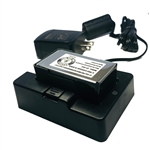- Joined
- Feb 22, 2007
- Messages
- 6,494
Boy I bet you Darkside regrets that faux pas about not charging while in use.
He got repetitively corrected in posts # 14,15,18 + 19... .
.
Seriously though, when the psr-800 came out from GRE around 2011 it was the cat's meow. Everyone was puzzled as to why it didn't have a keyboard and was so user-unfriendly but it was compact and had that great bright Easy-to-Read display. We eagerly awaited the PSR 900 for about 2 years before GRE closed down and Whistler bought their line including the PSR 900 rebranding it as the ws1095.
As P2 simulcast spread they added that capability and of course added keyboards as they were demanded. Unfortunately to some of us it was apparent immediately that the P2 simulcast reception did not work for my system, the nxdn was not licensed and did not trunk track, working very poorly on my NX48 system.
After I bought my TRX 1, I was very pissed. It was a cool radio and looked great, compact and quite a plum.
I always felt what a shame it didn't work for me in my area because if it did it would be one sweet radio.
If you're in an area that will never go simulcast and the nxdn is not a busy system as only the voice channels will be scanned then go with it.
It's your choice.
He got repetitively corrected in posts # 14,15,18 + 19...
Seriously though, when the psr-800 came out from GRE around 2011 it was the cat's meow. Everyone was puzzled as to why it didn't have a keyboard and was so user-unfriendly but it was compact and had that great bright Easy-to-Read display. We eagerly awaited the PSR 900 for about 2 years before GRE closed down and Whistler bought their line including the PSR 900 rebranding it as the ws1095.
As P2 simulcast spread they added that capability and of course added keyboards as they were demanded. Unfortunately to some of us it was apparent immediately that the P2 simulcast reception did not work for my system, the nxdn was not licensed and did not trunk track, working very poorly on my NX48 system.
After I bought my TRX 1, I was very pissed. It was a cool radio and looked great, compact and quite a plum.
I always felt what a shame it didn't work for me in my area because if it did it would be one sweet radio.
If you're in an area that will never go simulcast and the nxdn is not a busy system as only the voice channels will be scanned then go with it.
It's your choice.


